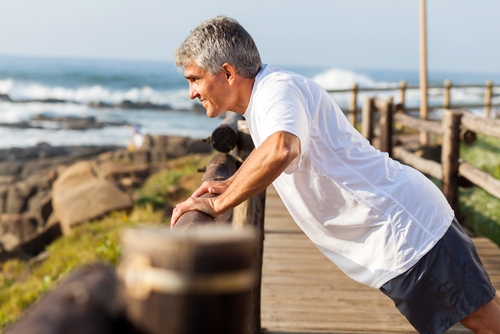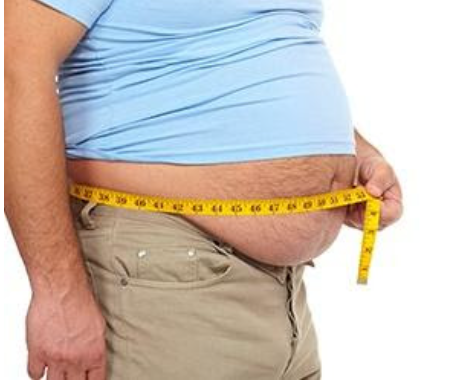They say that 40 is the new 30, and in some ways that may be true. But the fact remains that once we reach the big 4-0, we have to come to terms with an important truth: our bodies don’t work like they did in our 20s and 30s.
While we all know exercise is beneficial at any age, preventing chronic illnesses such as diabetes and heart disease, it’s important to consider how we exercise as we age.
Your Body at 40+
Sure, we may get wiser and have more money in our 401K plans, but our bodies begin to change when we hit 40. From the second we’re born until about 30-years-old, our muscles continue to grow bigger and stronger. But, as time moves on, we begin to consistently lose muscle mass. In fact, from 30 on we can lose 3 to 5 percent each decade if we don’t stay active. The technical term for this condition is known as sarcopenia with aging. The scary thing is, even if you do stay active, you can still lose muscle mass, just at a slower rate.
So why does this happen?
There are a few different factors. Some people may become unable to synthesize protein as they once did. There is also a decrease in HGH, testosterone and insulin, all necessary to build strong muscles. And, as we age, we may start to experience neurological fluctuations and, hence, weakened signaling from our brain to our muscles.
Unfortunately, this loss of muscle mass doesn’t just change how we move or how we feel, it changes how our body looks as well. Muscles use more calories than fat. The less muscle we have, the fewer calories we burn and the fatter we become. And the cycle repeats itself.
Get Moving
Hopefully you are now motivated to stay (or get) active so you can keep your strength and health. But, before you head to the gym to attempt the same workout routine you did 10 years ago, read the following 5 tips. These will help you exercise in a way that will promote physical health while minimizing your risk of injuries.
1. Focus on Flexibility and Balance
You perhaps have one of those friends who is obsessed with staying youthful and lean and has decided to simply work out more and harder than ever before. They spend 2 hours each day on the treadmill or stationary bike and take Zumba classes on the weekend. This friend would be much better off simply taking yoga classes instead.
That’s because as we age, it becomes even more important to focus on our flexibility and balance, both of which can suffer because of stiff joints and muscle loss. Dr. David Geier, former director of Sports Medicine at the Medical University of South Carolina in Charleston and spokesperson for the American Orthopaedic Society for Sports Medicine has said, “Flexibility is the third pillar of fitness, next to cardiovascular conditioning and strength training.”
Bottom line, remaining flexible will keep you injury-free as you age. One of the best ways to do this is through dynamic stretching. Unlike static stretching (think touching your toes and holding it for 30 seconds), which can actually damage muscles and tendons, dynamic stretching involves movement. This can include simply walking, squats or arm circles. Dynamic stretching offers better flexibility and coordination without injuries.
2. Step Away from the Weight Machine
As I’ve already mentioned, it’s incredibly important to keep as much muscle mass as possible as you age. But this doesn’t mean you should hit the gym and spend hours on the leg and chess press machines.
Instead, it’s important to build functional strength. While weightlifting machines build strength in isolated muscle groups, functional training improves strength using muscle groups you use together in everyday life situations.
So, the guy next to you in his 20s can get away with building massive quads on the leg press, but if you focus on your quads, without strengthening the muscles that balance them, like the hamstrings, you may find yourself “strong” in one way but unable to climb stairs without trouble. The key is to weight train through movement, so use medicine balls, kettle bells and free weights instead of static machines.
3. Rethink Cardio
Cardiovascular training is essential to maintaining a healthy heart and lungs. And it’s certainly effective in the battle of the bulge. Many people start packing on the pounds in their middle years, and this extra weight can increase a person’s risk of diabetes and hypertension, among other chronic illnesses.
So, while you definitely want to be sure you include cardio exercise in your program, you’ve got to rethink it once you hit 40. Specifically, you’ve got to forego long, slow distance cardio, like running. This kind of cardio can actually stress the body in middle age, raise cortisol levels, and even attack the precious muscle mass that’s already there.
There are two other forms of cardio that are much better for your heart and your weight. The first is called High Intensity Interval Training (HIIT), which entails short bursts of high intensity effort. The other cardio to focus on is longer, lower intensity training AKA take a nice long, brisk walk.
4. Make Sure to Rest and Recover
Back in the day you may have been able to workout hard for 5 or 6 days in a row without any problems, but, those days are behind you. And that’s a good thing, because everyone, no matter what their age, should be sure to give their body a rest.
You can reduce your risk of serious injury by making sure you give yourself two to three days between each strength training session. By all means, on your days off, keep going for those nice, long, easy walks that naturally stretch your leg muscles.
And don’t forget to get plenty of sleep. It’s during sleep that our bodies repair, rebuild and recover.
5. Support Your Joints
No matter what kind of exercise you do, be sure to support your joints. This could be as simple as wearing a knee brace or taking supplements that promote joint health.
When it comes to joint health supplements, we know a thing or two. That’s because we’ve spent years pouring through medical data, scientific studies and worked with PhDs to come up with a solution that would not only eliminate joint pain completely, but actually rebuild joint health at a cellular level. And in as little as 7 days. Your joints have always supported you – Click Here to find out how YOU can start supporting your joints too.
 Validating...
Validating... 






1 Comment